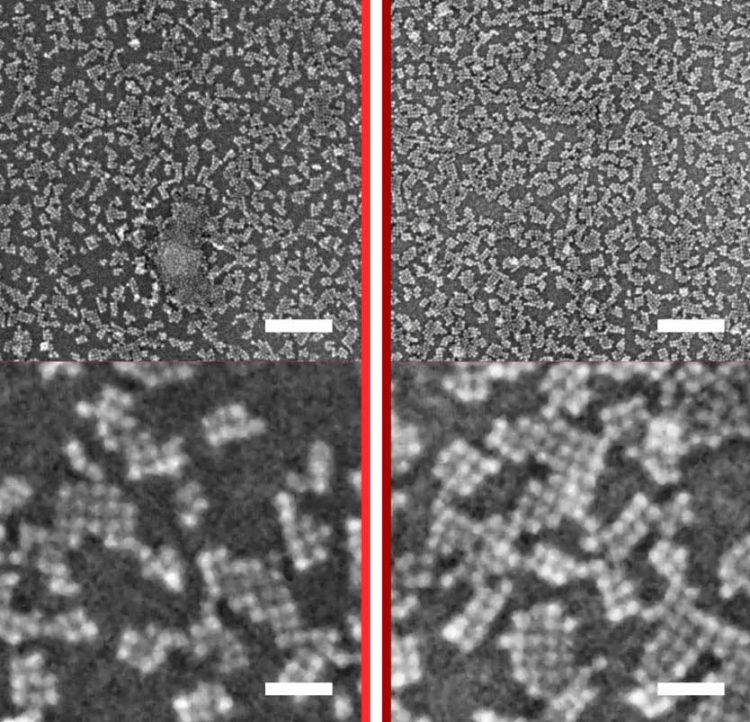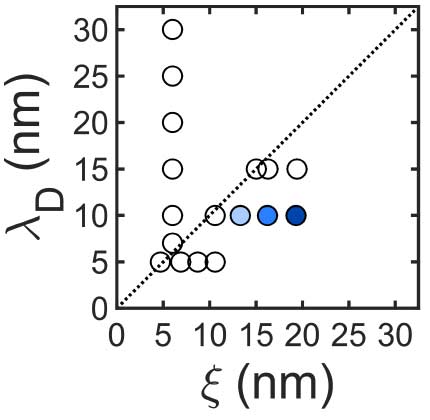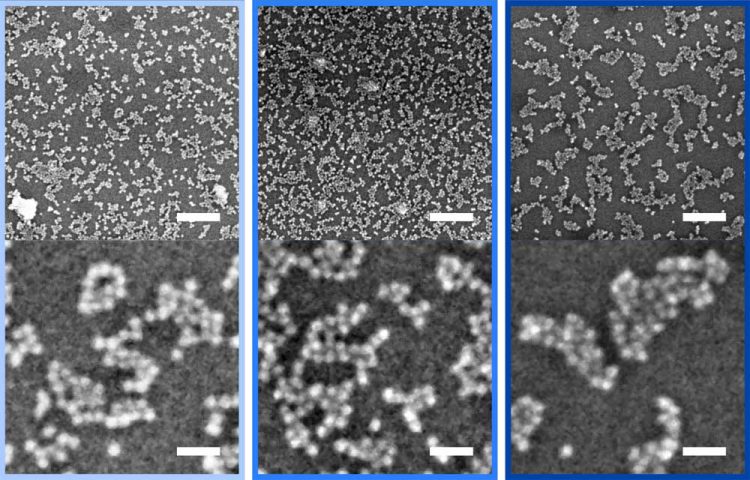Read our paper in Nanoscale Horizons
We deposit quantum dots on a substrate using critical Casimir forces. These solvent-mediated forces drive the nanocrystals to the substrate, giving rise to interactions between the nanocrystals, and between the nanocrystals and the substrate. Due to its exquisite temperature dependence, the critical Casimir force allows new temperature control of the deposition and growth process.
The nanocrystal interactions are composed of a superposition of repulsive electrostatic and attractive critical Casimir interactions. The two control parameters are thus the Debye screening length λD set by the salt concentration, and the solvent correlation length ξ set by temperature. Relevant here is the temperature difference ΔT to the solvent critical temperature. Depending on these two parameters, we can obtain crystalline and amorphous structures, as shown by the figures below. We hence achieve new in-situ control over the growth of quantum-dot layers that reminds of the epitaxial growth of atomic layers.
Images of deposited structures are shown below, together with the control parameters, indicated in a λD – ξ diagram.



